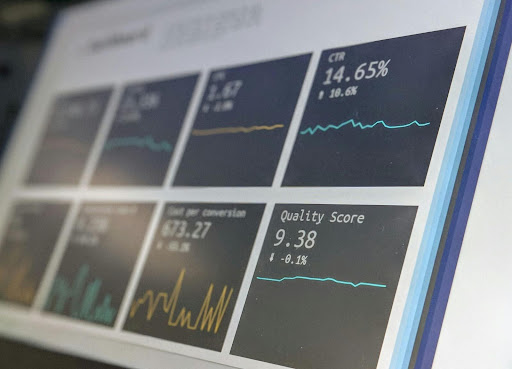Predictive Analytics in Inventory Management: Definition, How It Works, and Benefits

As markets shift quickly and supply chains grow more complex, predictive analytics inventory management has become a key strategy for staying ahead. It uses historical data, algorithms, and statistical models to improve how businesses handle stock, supply chain operations, and customer demand
Instead of reacting to problems after they happen, companies can now use predictive insights to prevent them. This approach supports better planning, fewer stockouts, and lower excess inventory. It replaces guesswork with data-backed decisions.
Businesses that apply predictive inventory management tools see improvements across the supply chain. Inventory optimization becomes more precise, reducing holding costs and waste. By meeting customer demand without overstocking, companies also improve customer satisfaction and gain better control over their operations.
What Is Predictive Analytics in Inventory Management?
Predictive analytics in inventory management refers to using data, algorithms, and artificial intelligence to forecast future inventory needs. It combines historical sales data, current market conditions, and customer behavior to guide inventory decisions.
Traditional methods rely on past averages or fixed reorder points. Predictive analytics improves on this by identifying trends and adjusting in real-time. For example, it tracks demand patterns during peak periods and adjusts forecasts based on consumer demand shifts or supply chain disruptions.
Common tools include machine learning models, predictive analytics software, and statistical analysis platforms. These tools process large volumes of inventory data to provide accurate predictions. They help businesses identify patterns, reduce errors, and respond quickly to changes.
By using predictive analytics in inventory, businesses manage stock more effectively, lower costs, and improve service levels.
How Predictive Analytics Works in Inventory Management
Predictive analytics in inventory management works through a clear process that starts with data and ends in actionable insights.
Data Collection
Businesses use robust data collection methods to gather data to feed into predictive systems. This includes:
- Historical sales data to understand past demand patterns
- Supplier lead times to factor in delays or variances
- Seasonal trends and peak periods to forecast fluctuations
- External factors such as promotions, holidays, or economic conditions
- Inventory levels and turnover rates to monitor current stock
Modeling
Once data is collected, algorithms process the information to identify trends and patterns. Predictive models, often powered by machine learning, train on historical data.
These models evolve as new data enters the system, allowing them to refine forecasts over time. Research from MIT and Park University highlights that modeling often uses regression analysis, time series forecasting, and classification algorithms.
Application
Businesses apply the insights from predictive analytics tools to make informed decisions. Forecasts guide restocking, production schedules, and warehouse allocation.
For instance, a spike in forecast demand triggers an early reorder, reducing the risk of stockouts. Companies also use predictive analytics models to optimize inventory levels across multiple locations and anticipate future demand accurately.
Benefits of Predictive Analytics for Inventory Planning
Predictive analytics offers practical advantages for inventory planning.
- Accurate demand forecasting: Predictive models generate precise forecasts, allowing businesses to stock what customers actually want—nothing more, nothing less.
- Lower stockout risk: Forecast-driven inventory planning helps teams reorder before stock runs out. It prevents lost sales caused by unavailable products and reduces the need for emergency restocking.
- Real-time decision-making: With access to live inventory data and updated predictions, teams can adjust orders and restocking plans immediately. This supports faster, more flexible supply chain responses.
- Simplified warehouse operations: Fewer inventory fluctuations lead to smoother processes in storage, picking, and shipping. Predictive analytics helps keep warehouse activity stable and predictable.
- Better disruption management: Unexpected events like supplier delays or demand spikes can be identified early. Predictive analytics flags these shifts, giving companies time to adjust before they cause major problems.
- Improved customer satisfaction: Reliable stock availability improves order fulfillment. When products arrive on time, customers are more likely to return.
- Greater supply chain visibility: Combining sales data, supplier performance, and demand trends gives businesses a clear view of their inventory flow. They can track what’s working—and fix what isn’t.
Predictive analytics helps businesses shift from reactive to proactive inventory strategies. It supports long-term planning, improves day-to-day operations, and reduces the cost of inventory errors.
Key Applications Across the Supply Chain
Predictive analytics inventory management plays a vital role across every stage of the supply chain. Here’s how predictive analytics supports key functions:

Demand Forecasting
Predictive analytics uses historical sales data, seasonal trends, and external market signals to predict future demand. Algorithms analyze customer behavior and past purchases to anticipate what products will be needed and when.
These insights help businesses anticipate future demand accurately, adjust production schedules, and plan inventory levels based on real-world patterns instead of estimates.
Inventory Replenishment
Predictive inventory management tools help companies set optimal reorder points and quantities. Instead of fixed restocking schedules, businesses rely on live data and demand forecasts.
This minimizes excess stock and reduces the risk of running out of high-demand items. The result is a leaner and more efficient inventory strategy that responds to current conditions, not outdated rules.
Warehouse Operations
Predictive analytics helps organize warehouse space more effectively. Accurate demand forecasting supports better picking and stocking decisions. Businesses can allocate space based on forecast demand patterns, improving the flow of goods and reducing bottlenecks.
Predictive inventory systems also support labor planning by anticipating peak periods and adjusting schedules accordingly.
Logistics and Distribution
Supply chain costs drop when predictive analytics is applied to routing and distribution. Models help plan faster, more efficient delivery routes based on past traffic patterns, delivery times, and customer locations. Forecasts also support shipment consolidation and better fulfillment timing, which improves customer satisfaction and reduces delays across the supply chain.
Challenges and Considerations
While predictive analytics offers strong benefits, adopting it comes with several challenges. Businesses need to address technical, operational, and organizational hurdles to use these systems effectively.
- Data quality and availability: Poor or incomplete data weakens the accuracy of predictive models. Clean, reliable data is essential.
- Cost of implementing analytics platforms: Predictive analytics solutions often require investment in new software and infrastructure.
- Skill gaps in analytics or data science: Many teams lack the technical skills to develop or use predictive models. This limits the impact of the tools.
- Integration with legacy inventory systems: Older systems may not support modern analytics platforms, making integration difficult.
- Change management and team adoption: Employees may resist new systems. Clear training and internal support are needed to shift from manual to data-driven planning.
Understanding these challenges early allows businesses to plan better and choose predictive analytics solutions that fit their goals and capabilities.
Best Practices for Implementing Predictive Analytics

The successful use of predictive analytics in inventory management depends on more than just the tools. Businesses need a focused strategy, the right systems, and teams equipped to act on data. The steps below help build a strong foundation for adoption:
- Define a clear inventory planning goal: Focus on a specific outcome, such as reducing stockouts, lowering inventory holding costs, or improving forecast accuracy.
- Choose compatible tools: Select predictive analytics tools that integrate easily with your existing WMS or ERP. Compatibility avoids data silos and improves workflow efficiency.
- Invest in training and data literacy: Ensure teams understand how predictive analytics works. Staff should know how to interpret model outputs and apply insights to real inventory decisions.
- Validate models regularly: Test model predictions against actual outcomes. This process helps fine-tune forecasting and improve future performance.
- Link analytics to broader goals: Make sure your predictive inventory management process supports supply chain strategies such as lean operations, faster delivery, or better customer satisfaction.
Conclusion
Predictive analytics reshapes inventory management by turning raw data into reliable forecasts. Businesses use it to adjust stock levels, streamline warehouse operations, and align inventory with customer demand. It removes the guesswork from planning and supports data-driven decisions across the entire supply chain.
With the right tools, training, and goals, any business can begin applying predictive analytics in inventory. The insights gained improve efficiency, reduce risk, and create a more responsive supply chain. Now equipped with the key concepts and practical steps, decision-makers can explore predictive analytics solutions that support their long-term operations.
FAQs
Here are common questions around predictive analytics inventory management to help clarify its use and value:
Which tool is commonly used for predictive analytics?
Popular tools include SAS, IBM SPSS, RapidMiner, and Python-based platforms using libraries like scikit-learn. Many ERP systems now come with built-in predictive analytics features. These tools process historical sales data, market trends, and inventory data to build accurate forecasting models.
What is the best inventory analysis method?
ABC analysis is widely used. It categorizes inventory based on value and sales frequency. ‘A’ items are high-value and low-quantity, ‘B’ items are moderate, and ‘C’ items are low-cost, high-volume. This method helps prioritize stock decisions and optimize inventory strategies efficiently.
What are the types of inventory management?
Common types include just-in-time (JIT), materials requirement planning (MRP), economic order quantity (EOQ), and days sales of inventory (DSI). Each type suits different business models. Predictive inventory management combines elements of these methods with data modeling for more precise control.
Do predictive analytics tools integrate with existing systems?
Most predictive analytics solutions offer ERP and WMS integrations. They tap into existing systems, gather inventory levels and supplier lead times, and use those inputs to run models. Proper integration prevents data silos and ensures smooth implementation.
Can small businesses use predictive analytics?
Yes. Cloud-based and modular predictive analytics platforms make advanced forecasting accessible. They scale with data volume and typically include tools for model validation and staff training. Even small teams can benefit from more accurate planning and cost savings.
